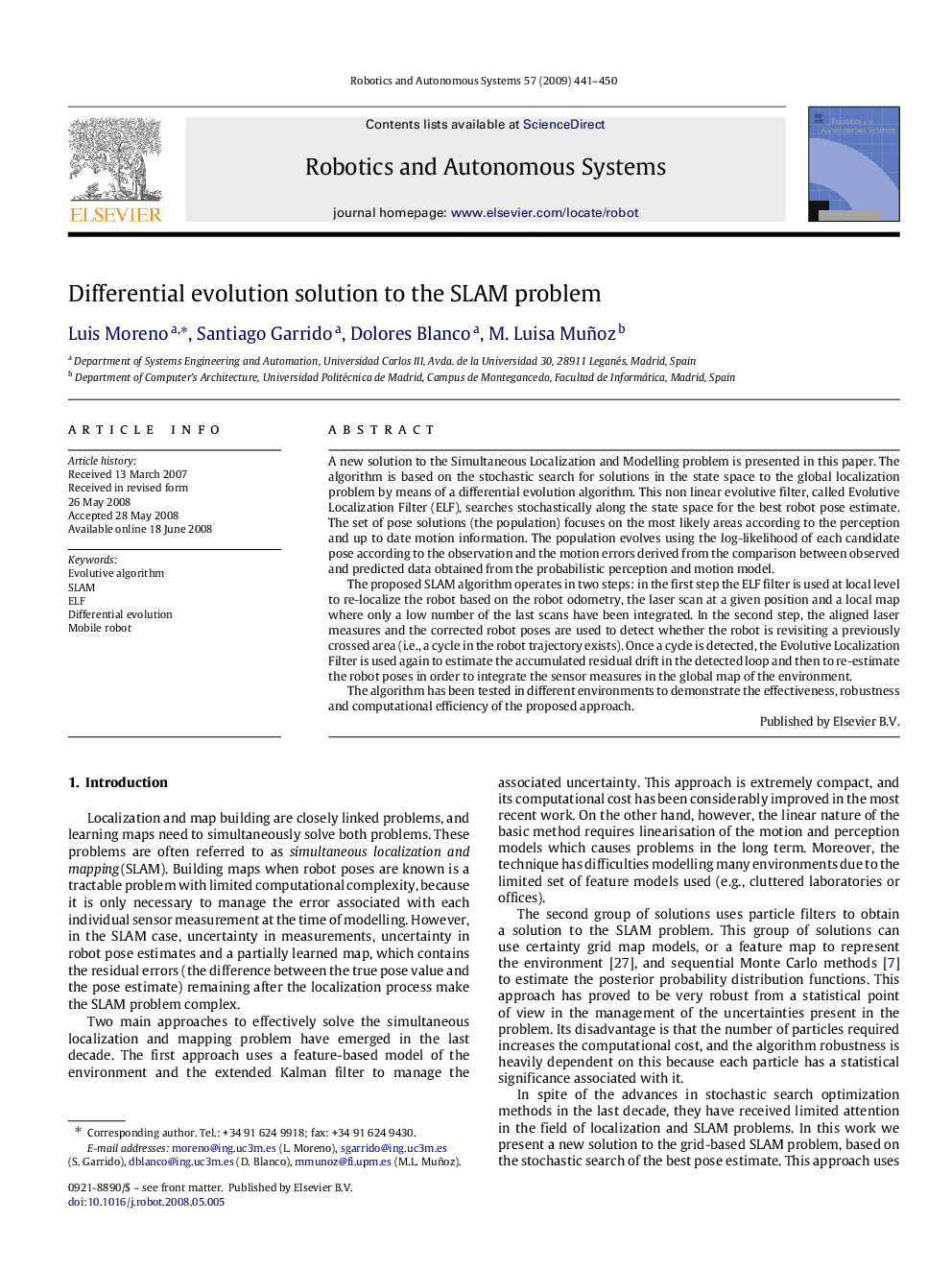| کد مقاله | کد نشریه | سال انتشار | مقاله انگلیسی | نسخه تمام متن |
|---|---|---|---|---|
| 411895 | 679594 | 2009 | 10 صفحه PDF | دانلود رایگان |

A new solution to the Simultaneous Localization and Modelling problem is presented in this paper. The algorithm is based on the stochastic search for solutions in the state space to the global localization problem by means of a differential evolution algorithm. This non linear evolutive filter, called Evolutive Localization Filter (ELF), searches stochastically along the state space for the best robot pose estimate. The set of pose solutions (the population) focuses on the most likely areas according to the perception and up to date motion information. The population evolves using the log-likelihood of each candidate pose according to the observation and the motion errors derived from the comparison between observed and predicted data obtained from the probabilistic perception and motion model.The proposed SLAM algorithm operates in two steps: in the first step the ELF filter is used at local level to re-localize the robot based on the robot odometry, the laser scan at a given position and a local map where only a low number of the last scans have been integrated. In the second step, the aligned laser measures and the corrected robot poses are used to detect whether the robot is revisiting a previously crossed area (i.e., a cycle in the robot trajectory exists). Once a cycle is detected, the Evolutive Localization Filter is used again to estimate the accumulated residual drift in the detected loop and then to re-estimate the robot poses in order to integrate the sensor measures in the global map of the environment.The algorithm has been tested in different environments to demonstrate the effectiveness, robustness and computational efficiency of the proposed approach.
Journal: Robotics and Autonomous Systems - Volume 57, Issue 4, 30 April 2009, Pages 441–450